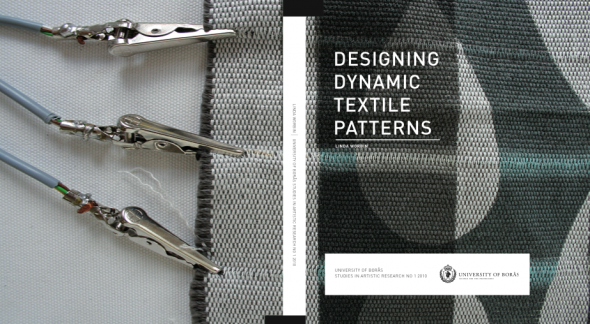Smart Textiles Design Lab Blog at The Swedish School of Textiles
Designing Dynamic Textile Patterns

ABSTRACT
Keywords: smart textiles, textile design, designing dynamic textile patterns
Progress in chemistry, fibres and polymers technology provides textile designers with new expressive materials, making it possible to design dynamic textile patterns, where several different expressions are inherent in the same textile, textiles that, for example, could alternate between a striped and checkered pattern.
Textiles are traditionally designed and produced to keep a given, static expression during their life cycle; a striped pattern is supposed to keep its stripes. In the same way textile designers are trained to design for static expressions, where patterns and decorations are meant to last in a specific manner. However, things are changing. The textile designer now deals also with a new raw material, a dynamic textile, ready to be further designed, developed and/or programmed, depending on functional context. This transformation in practice is not an easy one for the designers. Designers need to learn how to design with these new materials and their specific qualities, to be able to develop the full expressional potential inherent in “smart textiles design”.
The aim of this thesis is to display, and discuss, a methodology for designing dynamic textile patterns. So far, something that mainly has been seen in different experimental and conceptual prototypes, in artistic expressions and for commercial efforts etc.
In terms of basic experimental research this thesis explores the turn in textiledesign practice through a series of design experiments with focus on contributing to identifying and characterizing new design variables, new design methods and new design techniques as a foundation for dynamic textile patterns.
Download thesis from: http://bada.hb.se/handle/2320/5459
Worbin, L 2010, Designing Dynamic Textile Patterns. University of Borås, Studies in Artistic Research no 1, 2010
January 5, 2011 | Filed under Dissertations.

The Swedish School of Textiles
All content © 2024 by Smart Textiles Design Lab Blog